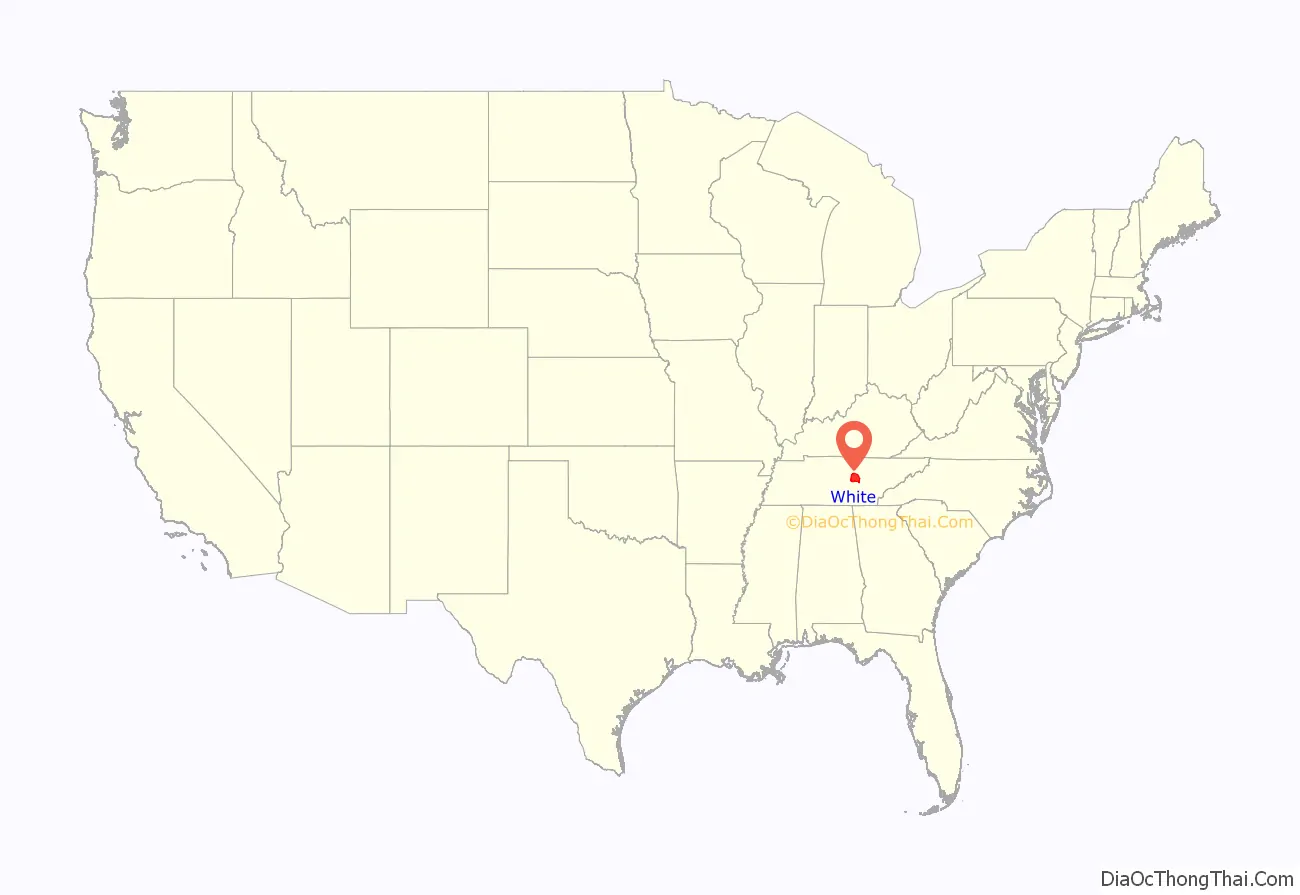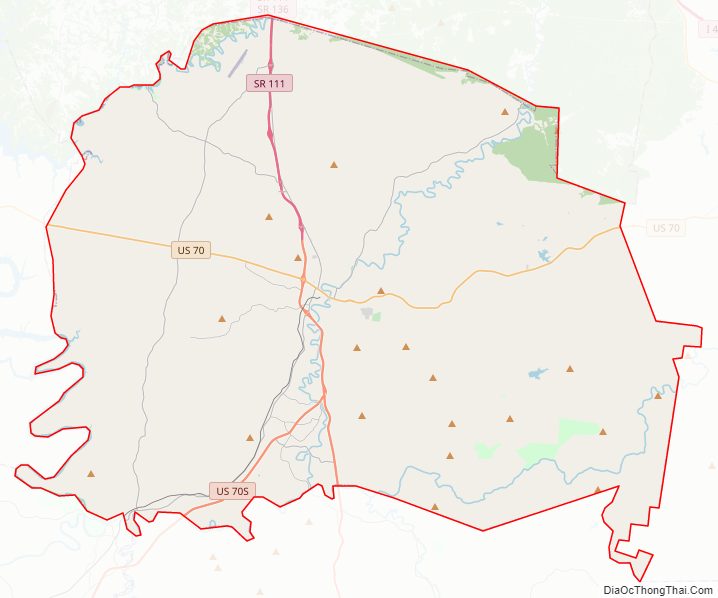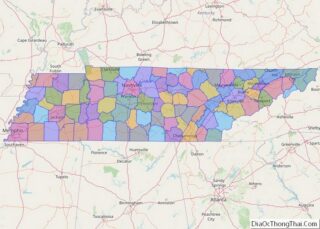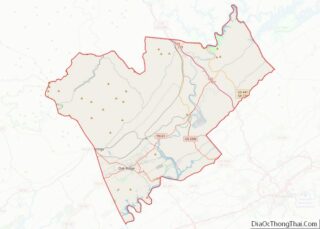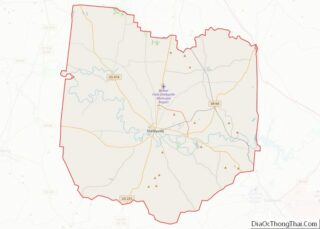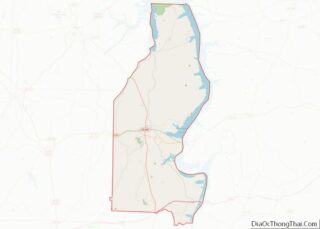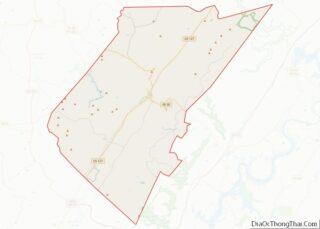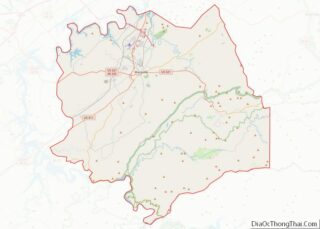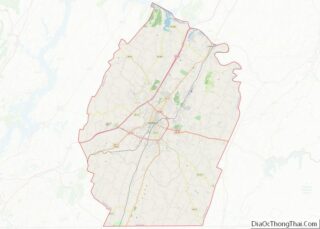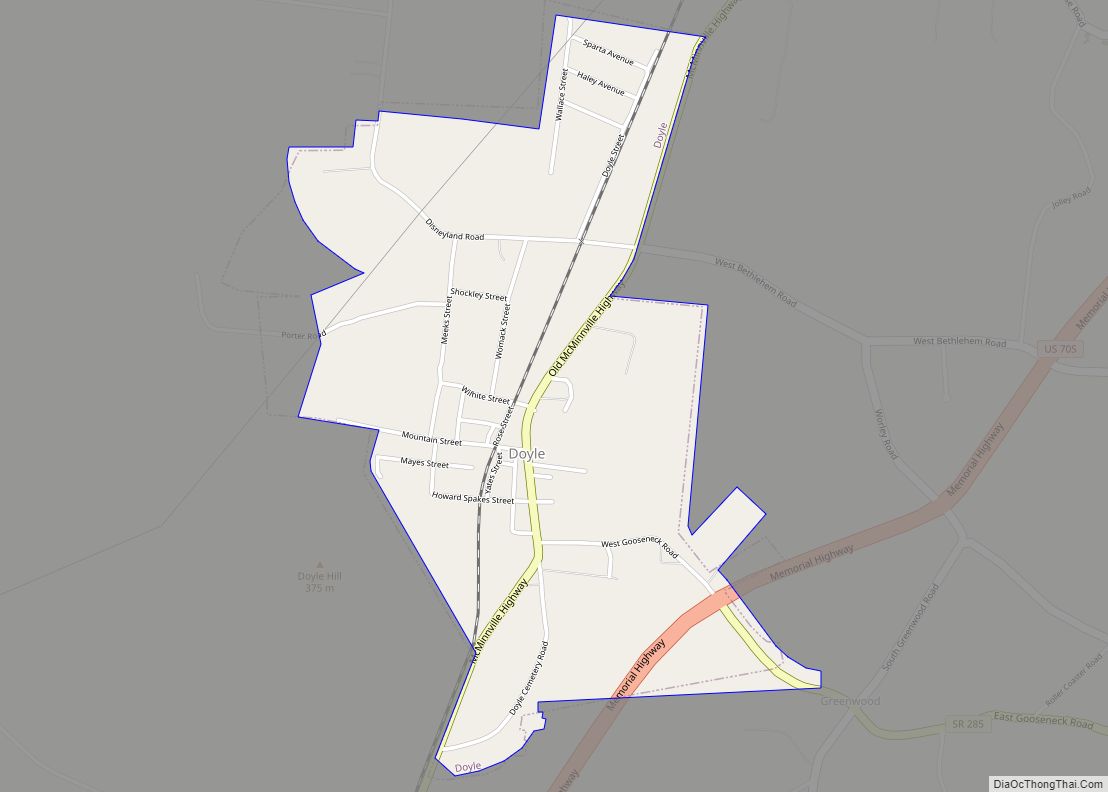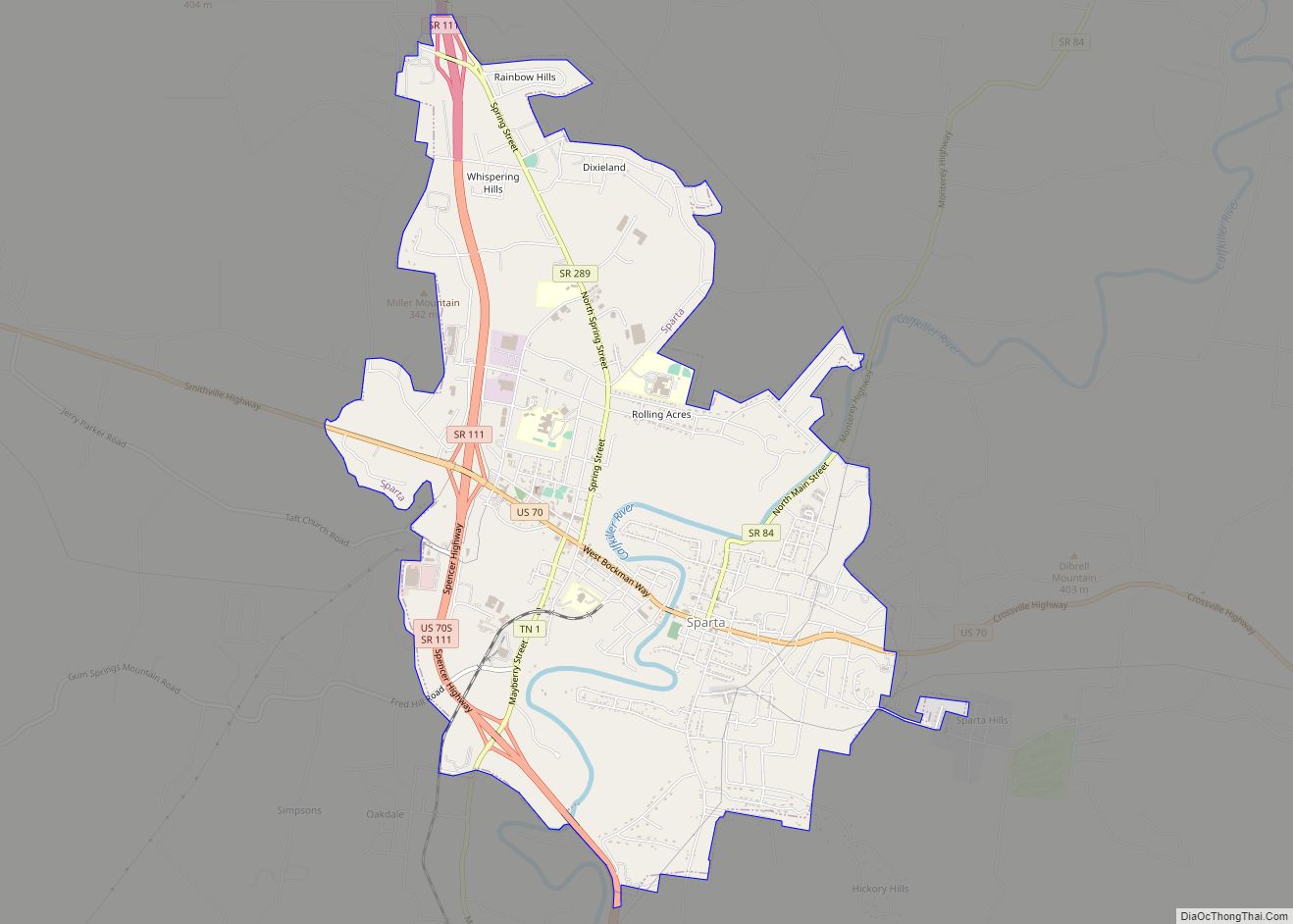White County is a county located in the U.S. state of Tennessee. As of the 2020 census, the population was 27,351. Its county seat is Sparta.
| Name: | White County |
|---|---|
| FIPS code: | 47-185 |
| State: | Tennessee |
| Founded: | September 11, 1806 |
| Named for: | John White, early settler |
| Seat: | Sparta |
| Largest city: | Sparta |
| Total Area: | 379 sq mi (980 km²) |
| Land Area: | 377 sq mi (980 km²) |
| Total Population: | 27,351 |
| Population Density: | 69/sq mi (27/km²) |
| Time zone: | UTC−6 (Central) |
| Summer Time Zone (DST): | UTC−5 (CDT) |
| Website: | whitecountytn.gov |
White County location map. Where is White County?
History
On September 11, 1806, an act of the Tennessee General Assembly created White County out of Smith and Jackson counties, responding to a petition signed by 155 residents of the area. The county’s original geographic area included all of what are now White and Warren counties, as well as parts of modern Cannon, Coffee, DeKalb, Franklin, Grundy, Putnam, and Van Buren counties.
The origin of the county’s name is disputed. The county is officially held to be named for John White (1751–1846), a Revolutionary War soldier, surveyor, and frontiersman who was the first known white settler of the area. White had moved his family to the Cumberland Mountains from Virginia in 1789. However, some historians suggest the county was named for Revolutionary War soldier James White, the founder of Knoxville.
A temporary county seat was established near Rock Island, now in Warren County. Three years later a permanent county seat was established on the banks of the Calfkiller River and named Sparta.
In 1840, White County became a destination for people from all over the country when Christopher Haufmann erected a large hotel on Bon Air Mountain, part of the Cumberland Plateau. The hotel was near some mineral springs as well as being at a high altitude; both were thought to promote health, and people came from far and wide for the “cures” advertised by the resort.
White County was the site of a very large saltpeter mining operation during the Civil War. The Cave Hill Saltpeter Pits (No. 1 and No. 2), located on Cave Hill near the mouth of England Cove, were intensively mined. Relics remain from that operation. Saltpeter is the main ingredient of gunpowder and was obtained by leaching the earth from these caves.
The Civil War deeply affected White County, although no major battles were fought in the area. As it was on the border between the largely pro-Union East Tennessee and pro-Confederate Middle Tennessee, the county was the scene of bloodshed from partisans (called “bushwhackers”) of both sides. One famous Confederate guerrilla operating in the area was Champ Ferguson, who caused much mayhem and destruction before he was arrested after the war on May 28, 1865. Ferguson was tried by a military court, convicted and executed by hanging, one of only two Confederates executed for war crimes. He is buried in France Cemetery near Sparta.
Over the subsequent decades, White County slowly rebuilt from the ashes of war. The county was connected to the outside world by railroad, mainly because of the booming coal mining industries being started on Bon Air Mountain. The mountain was rich in bituminous coal, and enterprising local businessmen were quick to realize the profit potential that represented. Several mining towns sprang up on the plateau part of the county, including Bon Air, Eastland, and Ravenscroft.
In 1981, a dispute between a local mining company and residents escalated and later became a Tennessee Supreme Court case known as Doochin v. Rackley. The disagreement began when the local coal companies began to strip mine residents’ private land. The court ruled in favor of the defendants because the Broad Form Deed did not recognize strip mining as a legal form of mining.
White County Road Map
Geography
According to the U.S. Census Bureau, the county has a total area of 379 square miles (980 km), of which 377 square miles (980 km) is land and 2.8 square miles (7.3 km) (0.7%) is water. The eastern part of the county lies atop the Cumberland Plateau, while the western portion is situated on the Highland Rim, at a lower elevation. The Plateau Escarpment is visible from much of the western part of the county.
The Caney Fork, the county’s primary drainage, flows across the southern portion of the county, and forms part the county’s border with Van Buren, Warren and DeKalb. The river descends from the Cumberland Plateau to the Highland Rim through Scott’s Gulf, a dramatic gorge noted for scenic waterfalls, most notably the 110-foot (34 m) Virgin Falls. The section of the Caney Fork in southern White County is part of Great Falls Lake, an artificial reservoir created by Great Falls Dam at Rock Island State Park. Downstream from this dam, the river enters a second reservoir, Center Hill Lake.
The Calfkiller River, a tributary of the Caney Fork, flows through the central part of White County, and drains the county seat, Sparta. The Falling Water River, also a tributary of the Caney Fork, flows through the northwestern part of the county, and forms part of the county’s border with Putnam County. The Falling Water River is noted for its 136-foot (41 m) waterfall, Burgess Falls, which straddles the Putnam-White line.
White County also boasts over 1,200 documented caves (over 3.17 caves per square mile), which makes White County one of the most cave-dense regions in the world.
Adjacent counties
- Putnam County (north)
- Cumberland County (east)
- Bledsoe County (southeast)
- Van Buren County (south)
- Warren County (southwest)
- DeKalb County (west)
Blue Spring Cave
Blue Spring Cave, located five miles northeast of Sparta, is the longest mapped cave in Tennessee and the tenth longest cave in the United States, with 38 miles (61 km) of passages. The footprints of extinct Pleistocene (Ice Age) jaguars were discovered in the cave in 1990 by Bill Walter.
Major highways
- US 70
- US 70S
- SR 1
- SR 84
- SR 111
- SR 135
- SR 136
- SR 285
- SR 289
State protected areas
- Bledsoe State Forest (part)
- Bridgestone/Firestone Centennial Wilderness Wildlife Management Area (part)
- Burgess Falls State Park and Natural Area (part)
- Rock Island State Park (part)
- Sparta Rock House State Historic Site
- Virgin Falls State Natural Area
